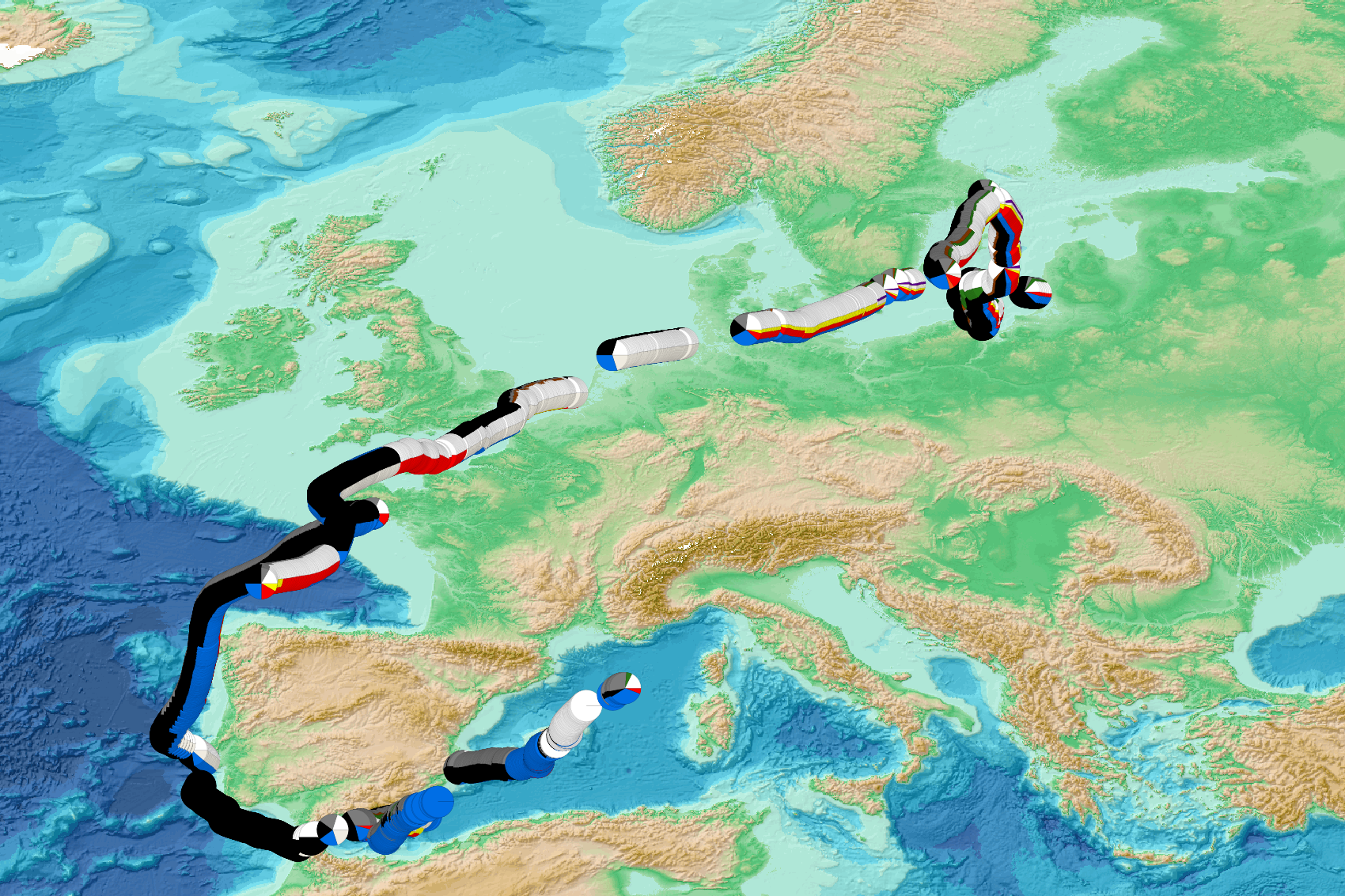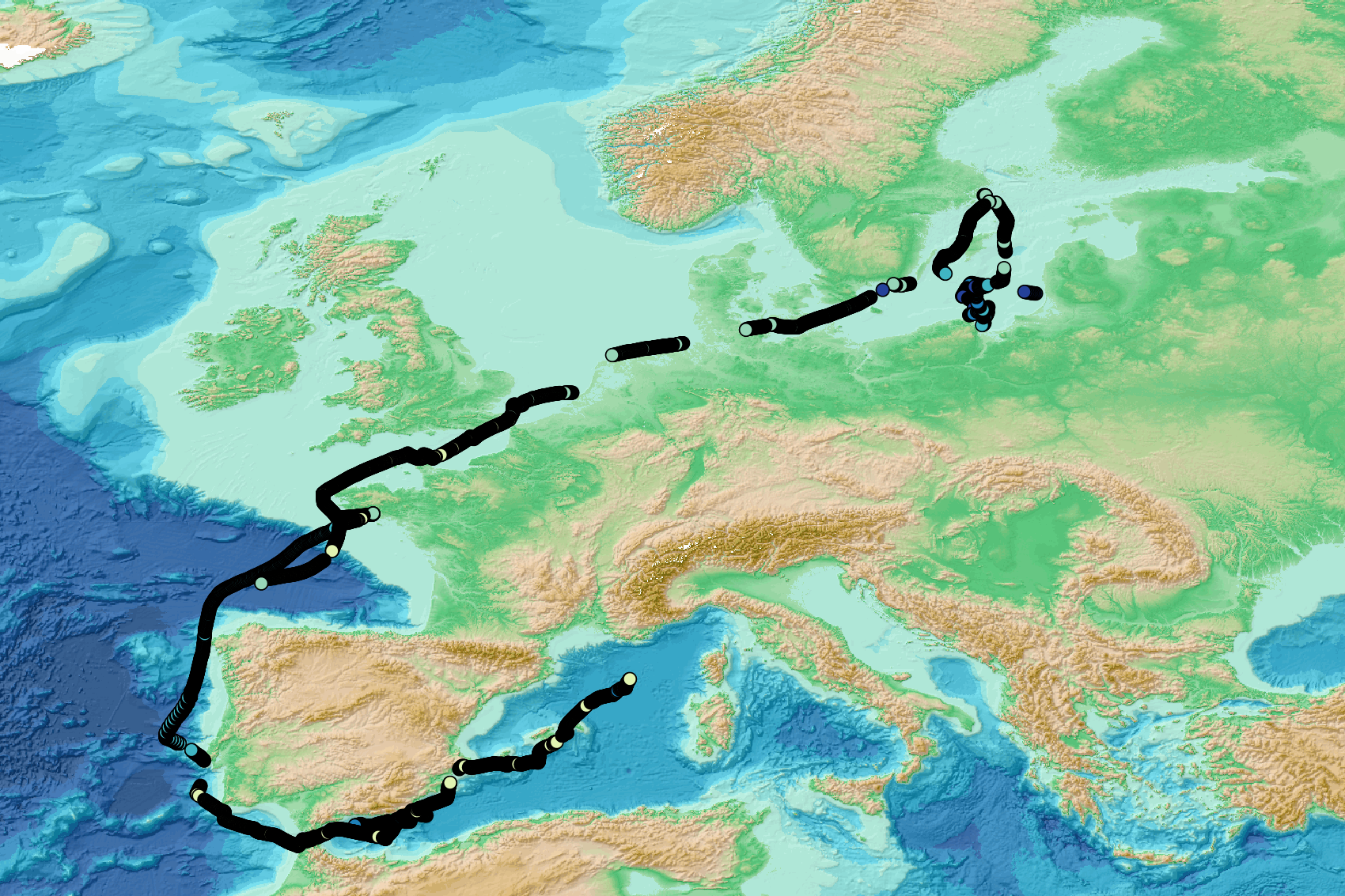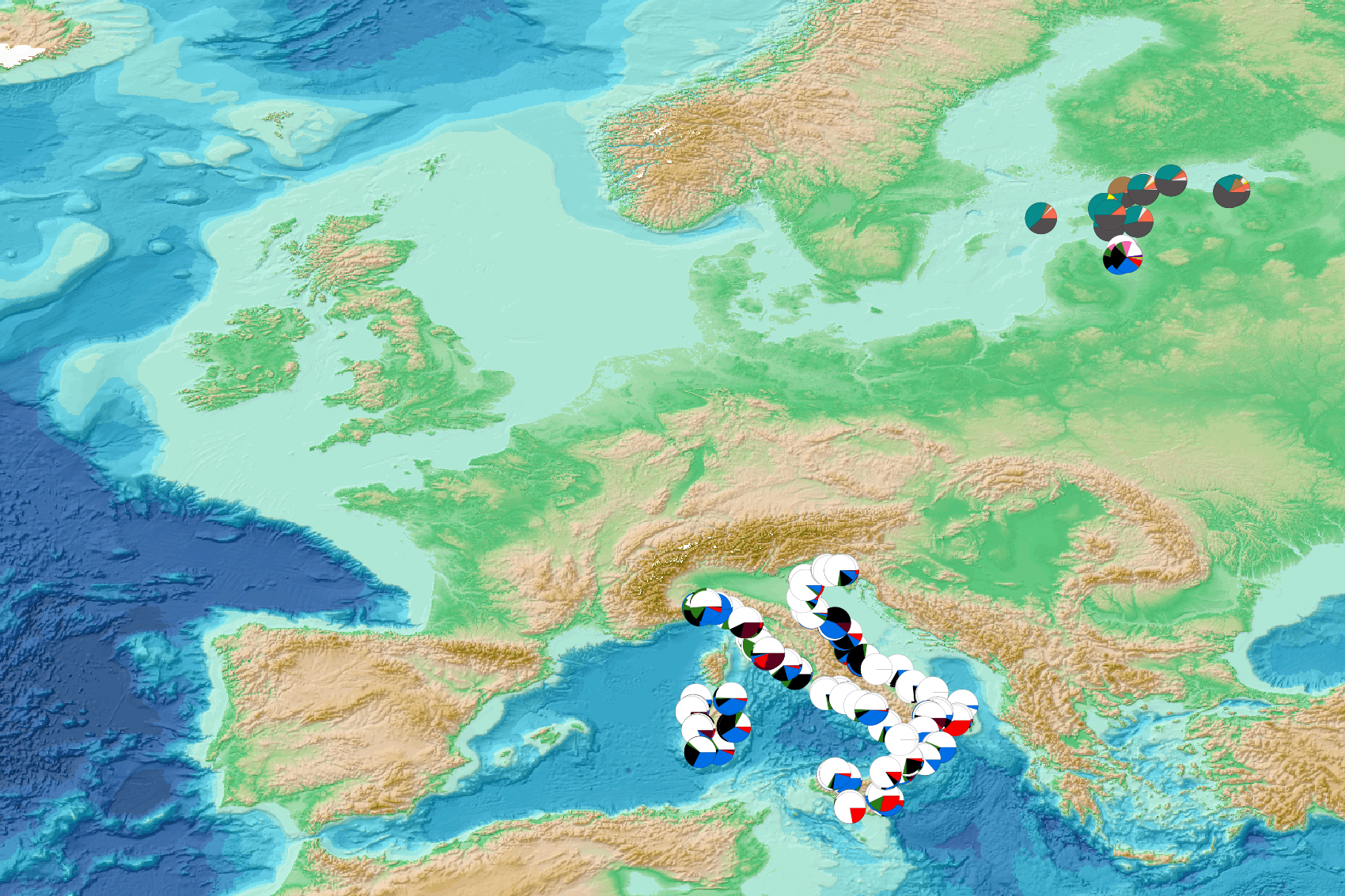Ionian Sea
Type of resources
Available actions
Topics
Keywords
Contact for the resource
Provided by
Years
Representation types
-
The dataset includes time-series of Posidonia oceanica production over ~20 years (1997 -2018) at sixty sites in the Greek Seas. The dataset also include environmental variables for the same sites and time -period (i.e., sea surface temperature, sea surface temperature of August, Chlorophyll a, Suspended particulate matter, Secchi depth)
-
KRIPIS Project Nutrients, Dissolved Oxygen and Chlorophyll-A data in Aegean and Ionian Sea, 2014-2015
-
Study of quality composition of excavated products from breakwaters constructions in Messinia with final aim of their disposal to the marine recipient.
-
Study of quality composition of excavated products in Vlycho in Lefkada island with the aim of their disposal to the marine recipient.
-
Study to assess the quality of the excavated materials from the construction of a fishing shelter in Sami, Kefalonia. And the possible effects they will have on the marine ecosystem, in case of their disposal.
-
The dataset contains data on beach litter items from 11 Greek beaches, 32 individual surveys and the accompanying metadata.
-
Data of seafloor litter density (number/sq km) per sampling station.
-

This visualization product displays the color of litter in percent per net per year from specific protocols different from research and monitoring protocols. EMODnet Chemistry included the collection of marine litter in its 3rd phase. Before 2021, there was no coordinated effort at the regional or European scale for micro-litter. Given this situation, EMODnet Chemistry proposed to adopt the data gathering and data management approach as generally applied for marine data, i.e., populating metadata and data in the CDI Data Discovery and Access service using dedicated SeaDataNet data transport formats. EMODnet Chemistry is currently the official EU collector of micro-litter data from Marine Strategy Framework Directive (MSFD) National Monitoring activities (descriptor 10). A series of specific standard vocabularies or standard terms related to micro-litter have been added to SeaDataNet NVS (NERC Vocabulary Server) Common Vocabularies to describe the micro-litter. European micro-litter data are collected by the National Oceanographic Data Centres (NODCs). Micro-litter map products are generated from NODCs data after a test of the aggregated collection including data and data format checks and data harmonization. A filter is applied to represent only micro-litter sampled according to a very specific protocol such as the Volvo Ocean Race (VOR) or Oceaneye. To calculate percentages for each color, formula applied is: Color (%) = (∑number of particles of each color)*100 / (∑number of particles of all color) When the number of microlitters was not filled or zero, the percentage could not be calculated. Standard vocabularies for microliter colors are taken from Seadatanet's H04 library (https://vocab.seadatanet.org/v_bodc_vocab_v2/search.asp?lib=H04) Warning: the absence of data on the map doesn't necessarily mean that they don't exist, but that no information has been entered in the National Oceanographic Data Centre (NODC) for this area.
-

This visualization product displays the density of floating micro-litter per net normalized per liter per year from specific protocols different from research and monitoring protocols. EMODnet Chemistry included the collection of marine litter in its 3rd phase. Before 2021, there was no coordinated effort at the regional or European scale for micro-litter. Given this situation, EMODnet Chemistry proposed to adopt the data gathering and data management approach as generally applied for marine data, i.e., populating metadata and data in the CDI Data Discovery and Access service using dedicated SeaDataNet data transport formats. EMODnet Chemistry is currently the official EU collector of micro-litter data from Marine Strategy Framework Directive (MSFD) National Monitoring activities (descriptor 10). A series of specific standard vocabularies or standard terms related to micro-litter have been added to SeaDataNet NVS (NERC Vocabulary Server) Common Vocabularies to describe the micro-litter. European micro-litter data are collected by the National Oceanographic Data Centres (NODCs). Micro-litter map products are generated from NODCs data after a test of the aggregated collection including data and data format checks and data harmonization. A filter is applied to represent only micro-litter sampled according to a very specific protocol such as the Volvo Ocean Race (VOR) or Oceaneye. Densities were calculated for each net using the following calculation: Density (number of particles per liter) = Micro-litter count / Sampling effort (l) When the number of microlitters was not filled, the density could not be calculated. Percentiles 50, 75, 95 & 99 have been calculated taking into account data for all years. Warning: the absence of data on the map doesn't necessarily mean that they don't exist, but that no information has been entered in the National Oceanographic Data Centre (NODC) for this area.
-

This visualization product displays the color of litter in percent per net per year from research and monitoring protocols. EMODnet Chemistry included the collection of marine litter in its 3rd phase. Before 2021, there was no coordinated effort at the regional or European scale for micro-litter. Given this situation, EMODnet Chemistry proposed to adopt the data gathering and data management approach as generally applied for marine data, i.e., populating metadata and data in the CDI Data Discovery and Access service using dedicated SeaDataNet data transport formats. EMODnet Chemistry is currently the official EU collector of micro-litter data from Marine Strategy Framework Directive (MSFD) National Monitoring activities (descriptor 10). A series of specific standard vocabularies or standard terms related to micro-litter have been added to SeaDataNet NVS (NERC Vocabulary Server) Common Vocabularies to describe the micro-litter. European micro-litter data are collected by the National Oceanographic Data Centres (NODCs). Micro-litter map products are generated from NODCs data after a test of the aggregated collection including data and data format checks and data harmonization. A filter is applied to represent only micro-litter sampled according to research and monitoring protocols as MSFD monitoring. To calculate percentages for each color, formula applied is: Color (%) = (∑number of particles of each color)*100 / (∑number of particles of all color) When the number of microlitters was not filled or zero, the percentage could not be calculated. Standard vocabularies for microliter colors are taken from Seadatanet's H04 library (https://vocab.seadatanet.org/v_bodc_vocab_v2/search.asp?lib=H04) Warning: the absence of data on the map doesn't necessarily mean that they don't exist, but that no information has been entered in the National Oceanographic Data Centre (NODC) for this area.
 EMODnet Product Catalogue
EMODnet Product Catalogue